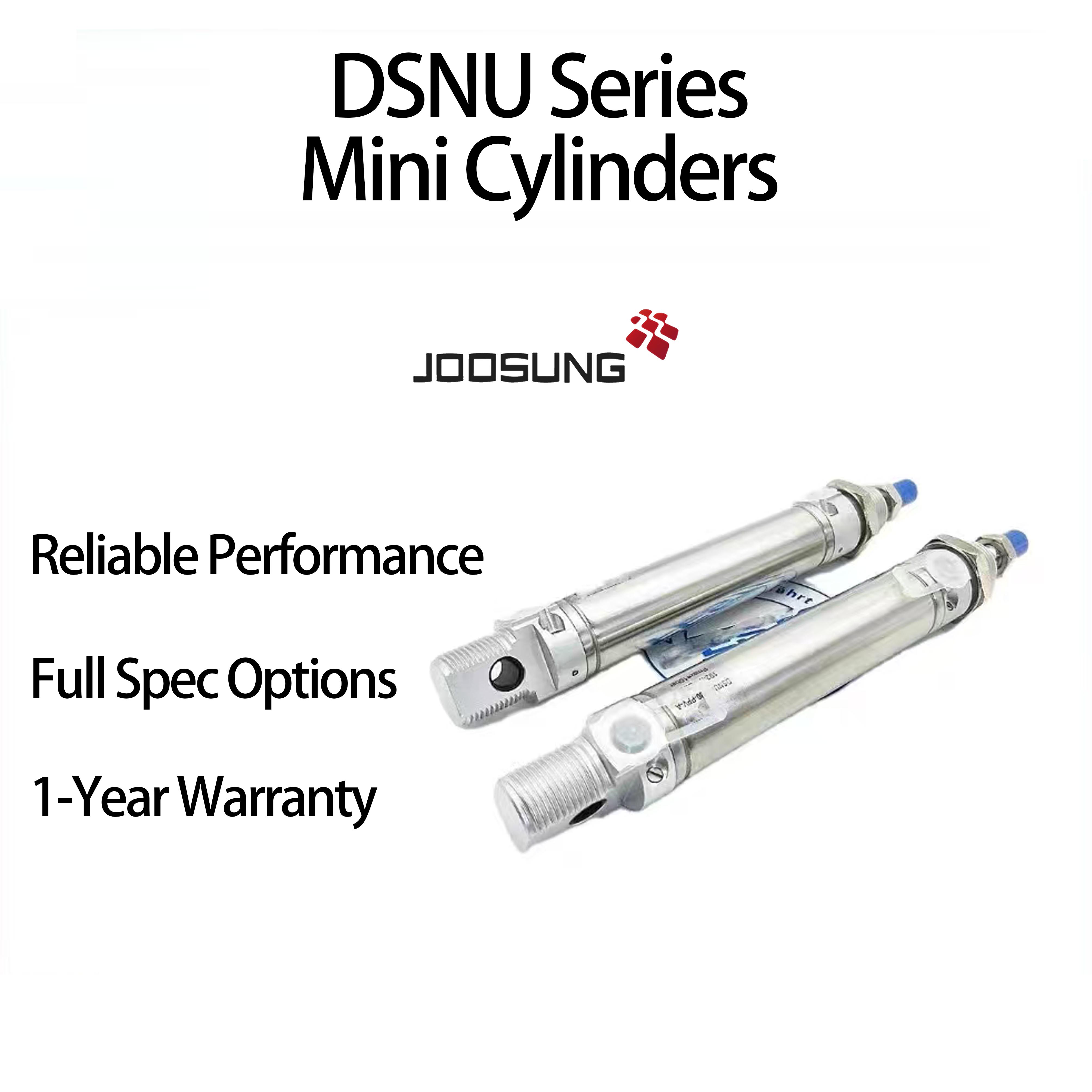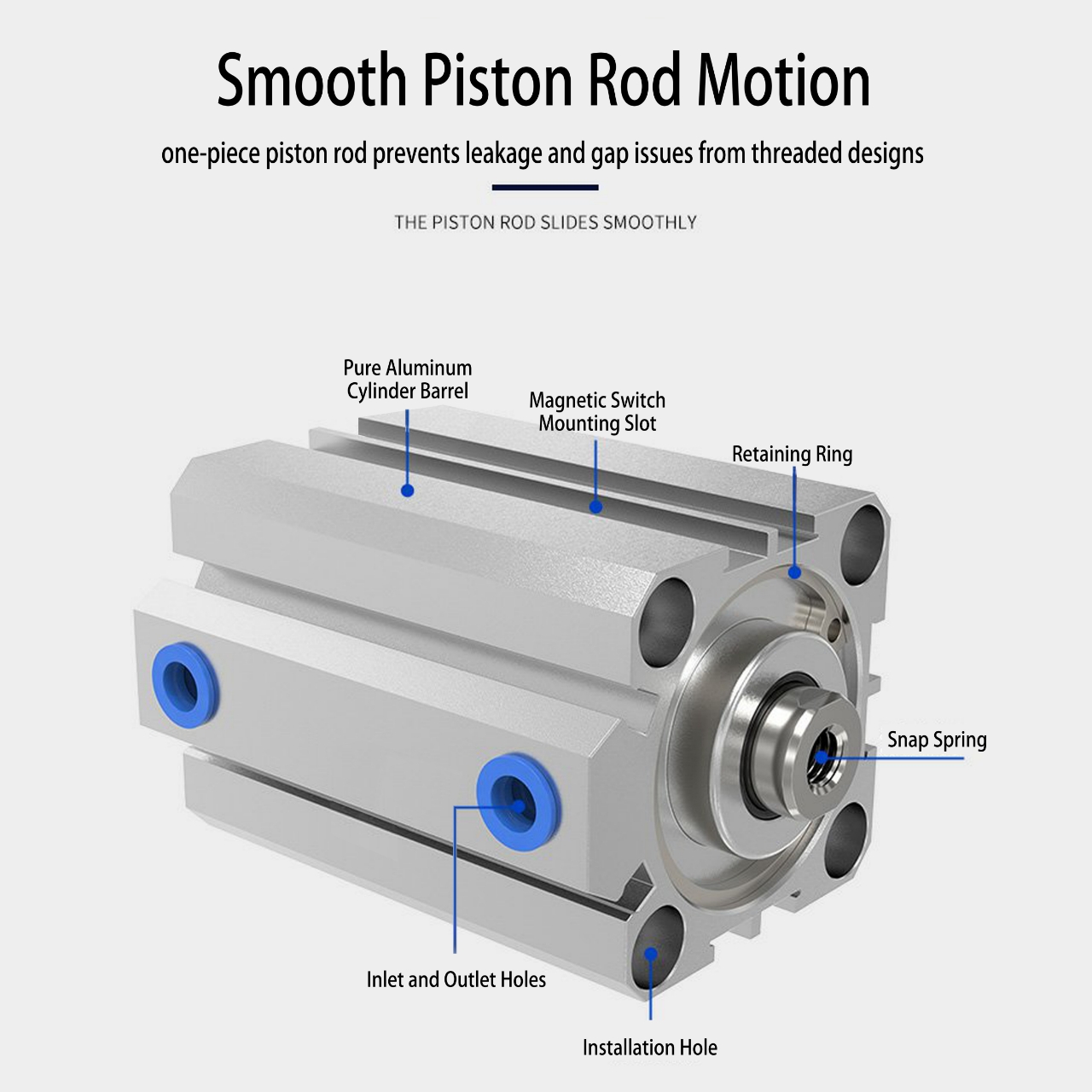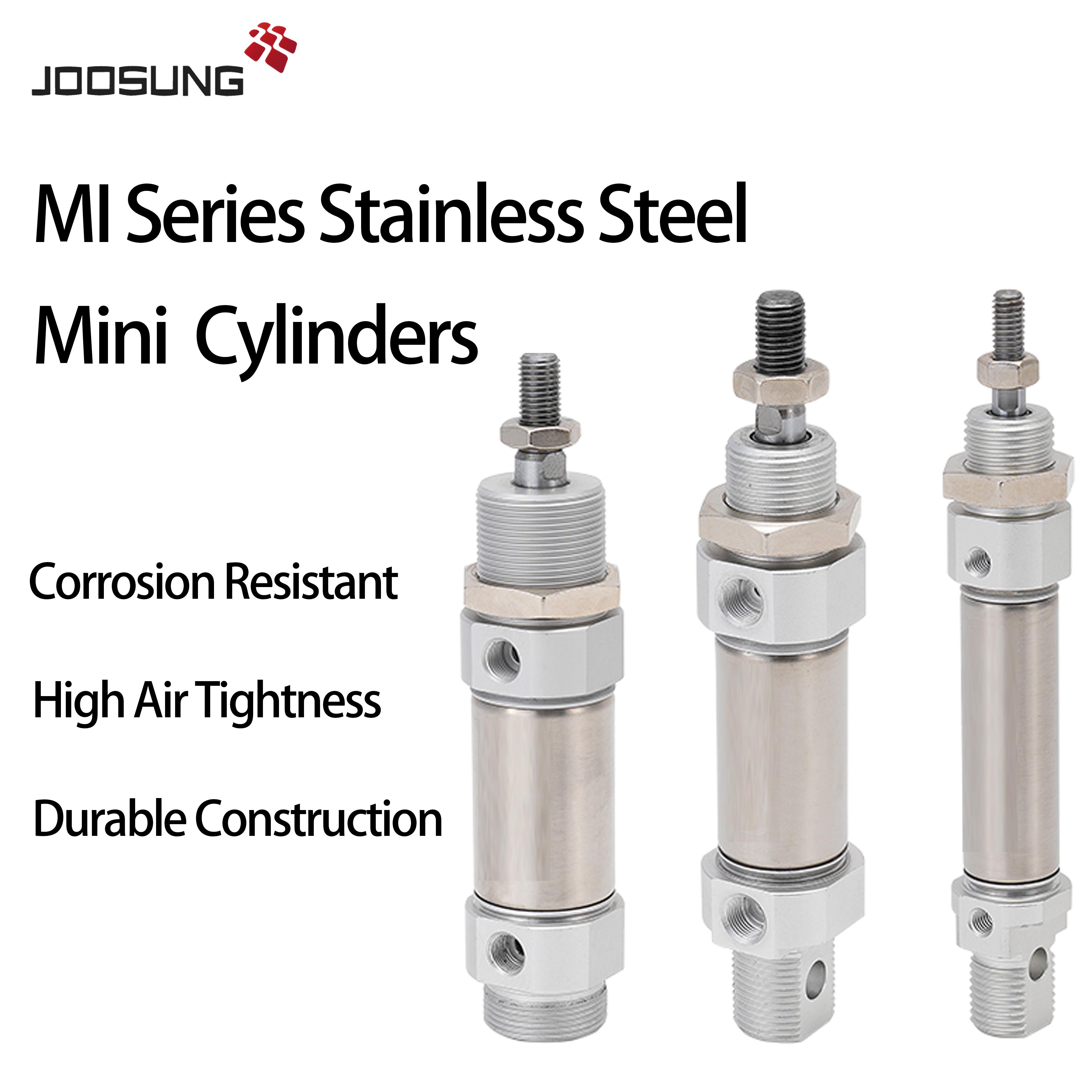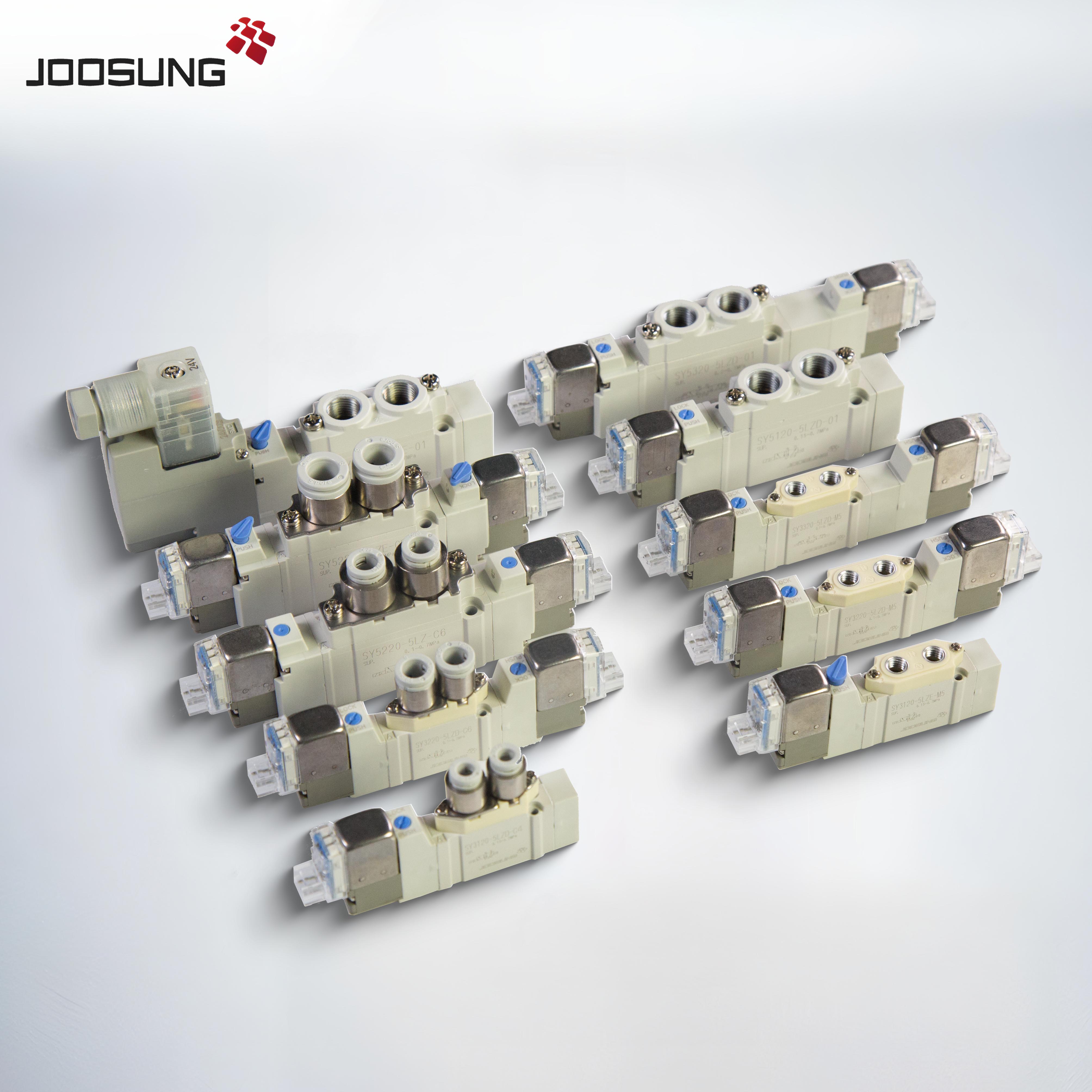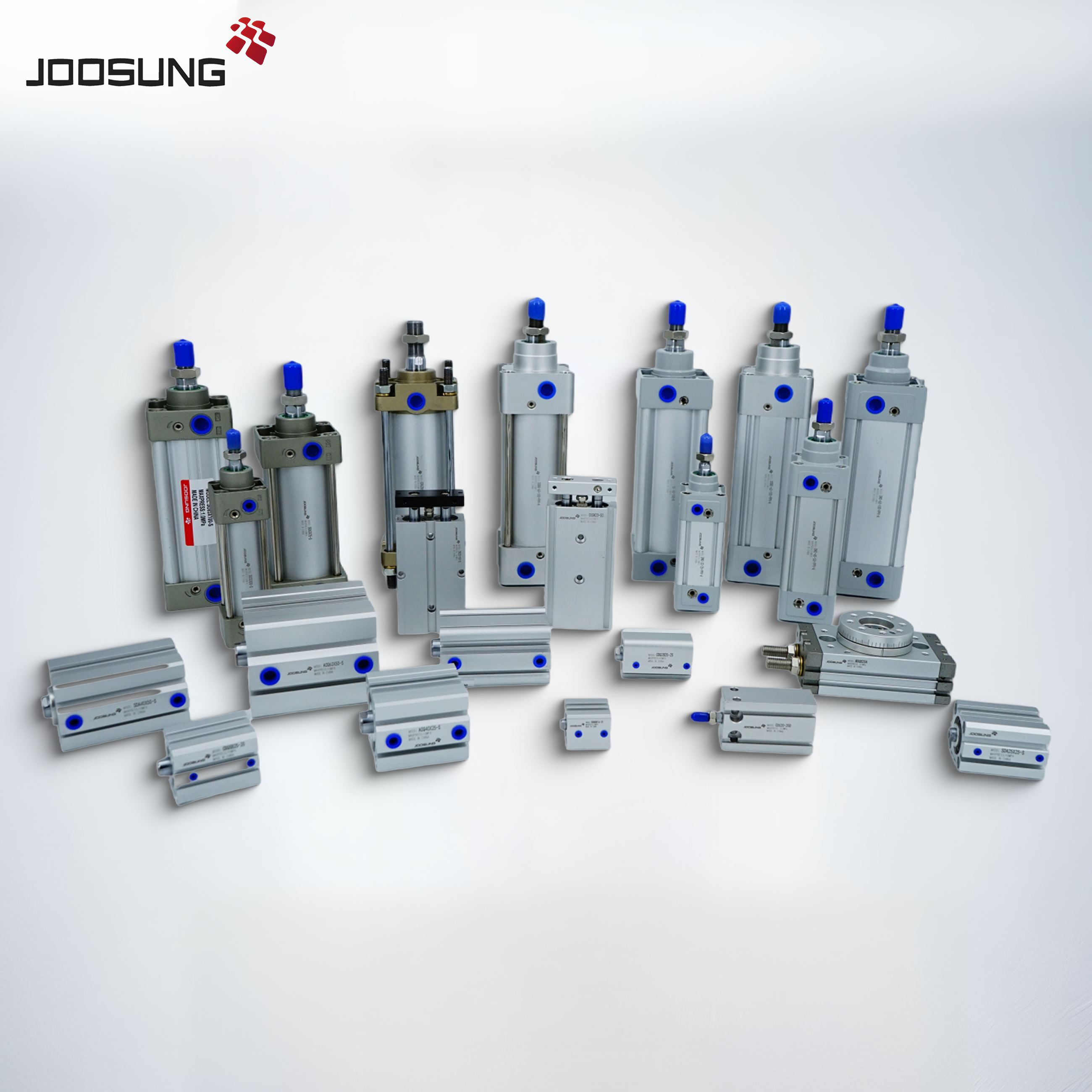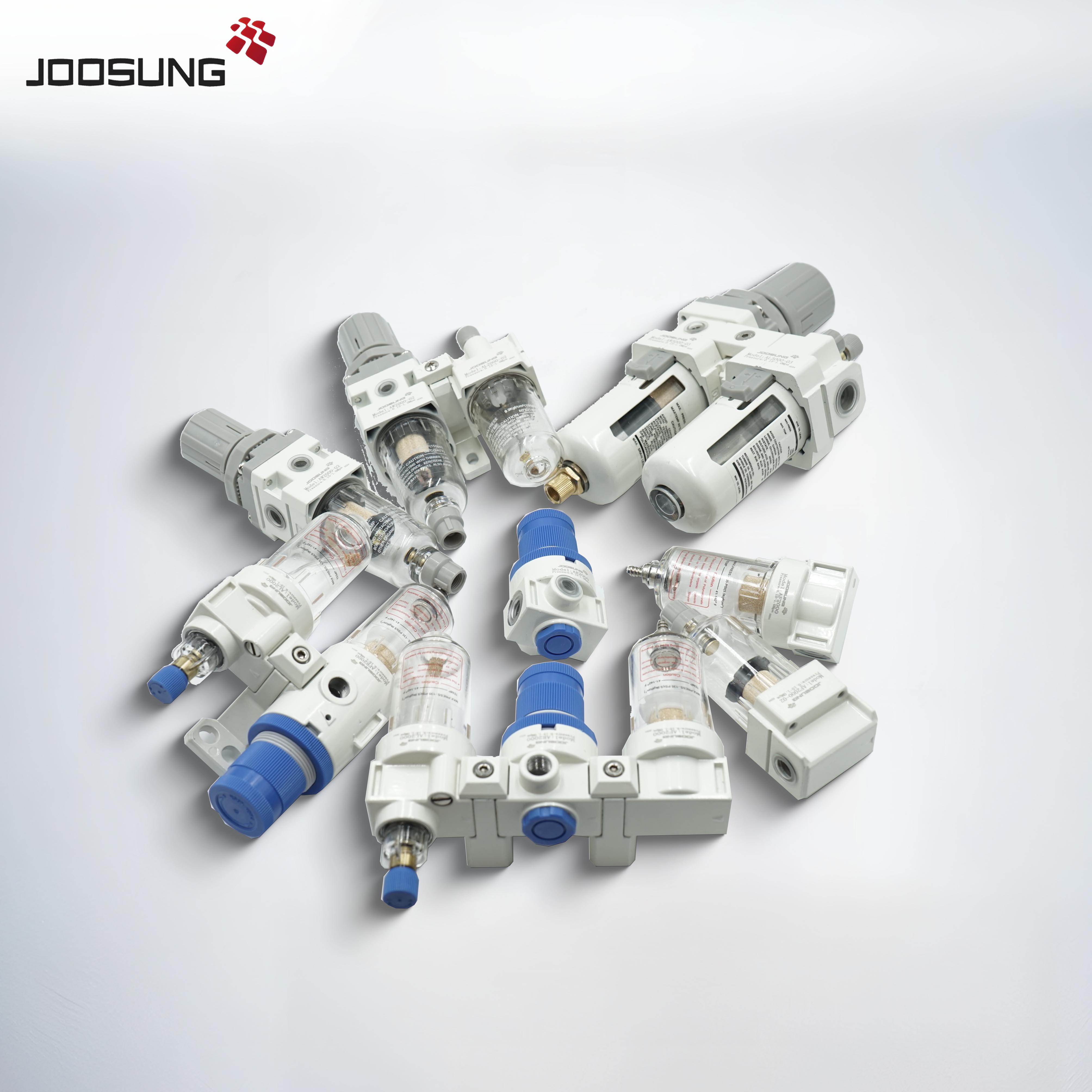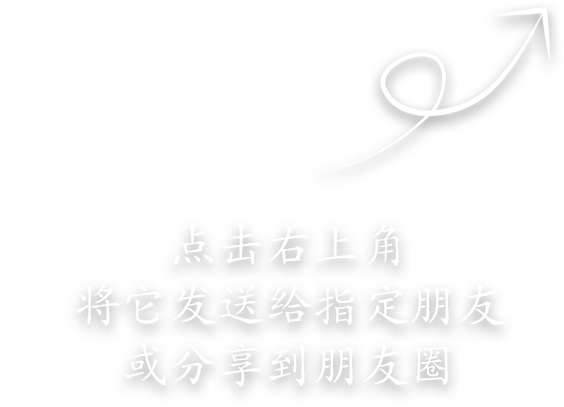The diverse composition and working principle of the cylinder
Next, we will explore in depth the composition of ordinary cylinders and their working principles.
The composition of the cylinder mainly includes the cylinder body, the piston, the sealing ring and the magnetic ring (suitable for the cylinder with the sensor). Its working principle is to use pressure air to push the piston to move, by adjusting the direction of intake, and then change the direction of movement of the piston rod.
However, the cylinder may encounter some failure problems during operation, such as the piston is stuck and cannot operate, or the cylinder is weak, the seal is worn and the air leaks.
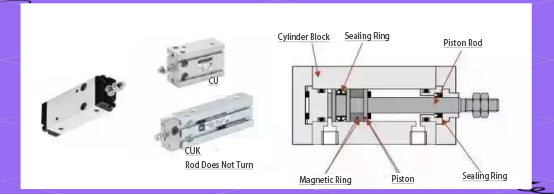
Structure and working principle of typical cylinder
Take the single piston rod double acting cylinder widely used in the pneumatic system as an example, its typical structure is shown in the figure. The cylinder is composed of a cylinder, a piston, a piston rod, a front end cover, a back end cover and a seal. The inside of the cylinder is divided into two chambers through the piston, namely, the piston rod chamber (referred to as the rod chamber) and the piston rod chamber (referred to as the rodless chamber).
During operation, if compressed air is input from the rodless chamber and there is a rod-chamber exhaust, then the pressure difference between the two chambers of the cylinder will push the piston to overcome the resistance load and make the piston rod extend. In contrast, if there is a rod cavity intake and no rod cavity exhaust, the piston rod will retract. By alternating this intake and exhaust operation, the piston can achieve reciprocating linear motion.
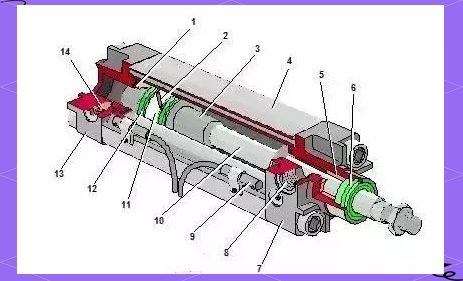
Structure and working principle of common double acting cylinder
The structure of a common double-acting cylinder is similar to that of a single piston rod double-acting cylinder, which is also composed of a cylinder, a piston, a piston rod, a front end cover, a back end cover and a seal. The difference is that both sides of the piston of the ordinary double-acting cylinder are provided with sealing rings, so that the compressed air can be input from both sides, so as to achieve the two-way movement of the piston. The advantage of this cylinder is that its force and speed characteristics are more balanced, and it can meet more complex work needs.
. Buffer plunger (3)
.Piston (2)
.Cylinder (4)
. Guide Sleeve (5)
.Dust ring (6)
. Front end Cover (7)
.Air Port (8)
.Sensors (9)
. Piston rod (10)
.Wear ring (11)
.Sealing ring (12)
.Rear end Cover (13)
. Buffer throttle valve (14)
These are the main components of ordinary double-acting cylinders, which together form the complete structure of the cylinder. Through the synergy of these components, the cylinder is able to achieve its bidirectional movement and balanced force and speed characteristics.
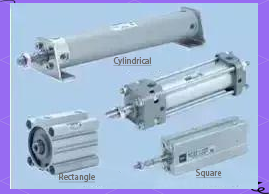
Structure and working principle of mechanical contact rodless cylinder
Mechanical contact rodless cylinder, its clever design, the structure is shown in Figure 3. On the cylinder shaft, a carefully designed groove runs through it, and the piston and slide block move smoothly in the upper part of the groove. In order to ensure the sealing and dust resistance of the cylinder, the polyurethane sealing belt and the dust proof stainless steel belt are cleverly fixed at both ends of the cylinder head. The piston bracket passes through the groove, tightly connecting the piston and the slider into a single unit. In this way, the coordinated movement of the piston and the slider can drive the executive mechanism fixed on the slider to achieve efficient reciprocating action.
The outstanding advantages of this rodless cylinder include: the installation space can be reduced by half compared to ordinary cylinders under the same stroke conditions; No additional anti-turning mechanism is required; Suitable for cylinder diameter range of 10 ~ 80mm, and when the cylinder diameter is greater than or equal to 40mm, the maximum travel can reach 7m; In addition, its speed performance is excellent, the speed of the standard type cylinder can reach 0.1 ~ 0.5m/s, and the high-speed type can reach 0.3 ~ 3.0m/s. However, it also has some shortcomings: the sealing performance is relatively weak, easy to occur external leakage, so in the use of three-position valve must choose the medium pressure type; At the same time, due to the small load, in order to enhance the load capacity, it may be necessary to add additional guiding mechanism.
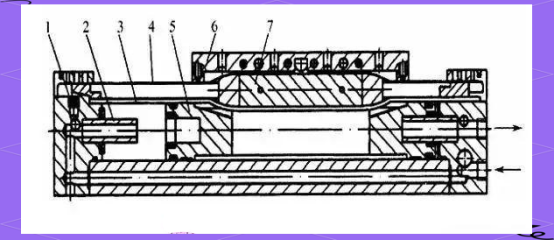
Detailed component analysis of mechanical contact rodless cylinder
In mechanical contact rodless cylinders, each component plays a vital role. Among them, the throttle valve is used to regulate the gas flow, so as to control the cylinder speed; The buffer plunger can effectively reduce the impact force of the piston during movement and protect the cylinder from damage; The clever design of the sealing belt and dustproof stainless steel belt ensures the sealing and dustproof of the cylinder. In addition, the piston and the slider are closely connected through the piston frame and work together to drive the actuator to achieve efficient reciprocating movement.
Structure and working principle of magnetic rodless cylinder
Magnetic rodless cylinder realizes synchronous movement of piston and external moving body of cylinder block through magnetic force. Its structure is shown in Diagram 4, and the key is a set of high-strength magnetic permanent magnetic rings equipped on the piston. The magnetic force lines of these magnetic rings will pass through the thin-walled cylinder and interact with another set of magnetic rings outside, resulting in a strong suction force due to the opposite magnetism. When the piston is pushed by air pressure in the cylinder, this magnetic force plays a role, so that the piston moves the magnetic ring sleeve outside the cylinder. It is worth noting that the thrust of the cylinder piston needs to be balanced with the suction of the magnetic ring.

Unique features of magnetic rodless cylinders
Magnetic rodless cylinder, an innovative mechanical device, with its unique magnetic drive mode, realizes the synchronous movement of the piston and the external moving body of the cylinder block. Its core is the high-strength magnetic permanent magnetic ring equipped on the piston, which is pushed by the air pressure in the cylinder and interacts with the external magnetic ring, thereby driving the entire system. This structure not only simplifies the complex mechanical components of traditional cylinders, but also improves the overall efficiency of the system.
1-sleeve, 2-outer magnetic ring, 3-outer magnetic guide plate, 4-inner magnetic ring, 5-inner magnetic guide plate, 6-gland, 7-clamp ring, 8-piston, 9-piston shaft, 10-buffer plunger, 11-cylinder barrel, 12-end cap, 13-inlet and outlet. These components together form the fine structure of the magnetic rodless cylinder.
Structure and working principle of pinion and rack type swing cylinder
The core working principle of the pinion and rack type swing cylinder is the interaction between the rack and the gear on the piston. When the piston carries out reciprocating linear motion, it will rotate through the connected rack to drive the gear, so as to achieve the swing function. This design not only has low friction loss, but also has high gear transmission efficiency, so that the overall efficiency of the swinging cylinder can reach about 95%.
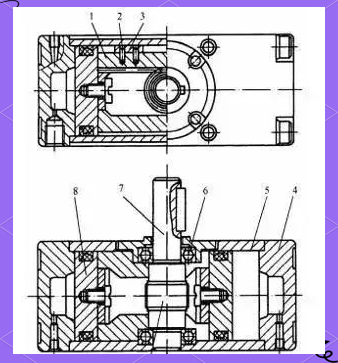
Working characteristics of rack-and-pinion type swing cylinder
Pinion and rack type swing cylinder, its working characteristics are mainly reflected in the clever coordination of the gear and rack. Driven by the reciprocating linear motion of the piston, the connected rack pushes the gear to rotate, and then realizes the swing function. This design not only has a small friction loss, but also has a gear transmission efficiency of more than 95%, ensuring the efficient performance of the swinging cylinder.
1-rack assembly, 2-spring pin, 3-slide block, 4-end cap, 5-cylinder block, 6-bearing, 7-shaft, 8-piston, 9-gear. These components work together to form the complete structure of the rack-and-pinion type swing cylinder.
Vane type swinging cylinder and its working principle
The structure of the single-vane type swing cylinder is shown in Figure 6, which mainly includes the blade shaft rotor (that is, the output shaft), the stator, the cylinder block and the front and rear end covers. The stator and the cylinder are fixed and connected, while the blades are connected to the rotor. The stator is provided with two air paths, when the left air intake, the right exhaust, thereby using compressed air to push the blade, drive the rotor clockwise swing. Otherwise, it swings counterclockwise.
Although the vane type swing cylinder has the advantages of small size and light weight, its manufacturing accuracy is very high, the sealing problem is more difficult, and the leakage phenomenon is more common. In addition, its dynamic seal contact area is wide, resulting in a relatively large friction resistance loss of the seal, which affects the output efficiency, usually less than 80%. Therefore, in practical applications, it is mainly limited to occasions where the installation position is limited, such as the rotation of the fixture, the opening and closing of the valve and the transposition of the workbench.

Characteristics and advantages of single vane type swing cylinder
Single-vane swing cylinder, with its unique structure and superior performance, stands out among many cylinder types. Its compact structure and light weight make it possible to install in a limited space. At the same time, it also has the advantages of high manufacturing accuracy, good sealing performance, etc., to ensure its stability and reliability during use. In addition, the dynamic seal contact area is wide, although it increases the friction resistance to a certain extent, but also provides a wider adjustment range and greater output torque. Therefore, the single-vane swing cylinder shows its unique advantages in applications such as the rotation of the fixture, the opening and closing of the valve and the rotation of the table.
Structure analysis of single vane type swing cylinder
The main components of the single vane type swing cylinder include: blade, rotor, stator and cylinder body. These components work together to give the cylinder its unique swing function and superior performance.
Principle and application of pneumatic hand claw
The pneumatic hand claw, as a key executive element in the manipulator, is inspired by the design of the variable cylinder. It can easily grasp objects, so as to achieve a variety of manipulator actions. In the field of automation, air hand claws are widely used in handling, transferring workpieces and other mechanisms, responsible for grasping and placing objects.
There are various types of air hand grippers, including parallel opening and closing fingers, elbow swing opening and closing grippers, as well as two -, three - and four-prong designs. Among them, the two-claw design is divided into flat and fulcrum open and closed, and the drive mode is linear and rotary.
The opening and closing motion of the air hand claw is usually driven by the reciprocating linear motion of the cylinder piston. This movement is transformed by the crank connecting rod, roller or gear connected with the claw, so that each claw can synchronously complete the opening and closing action.
Structure and working principle of thin film cylinder
Film cylinder, a compact, compact type of cylinder, its working principle diagram is as follows. The diaphragm in the film cylinder is usually made of fabric rubber, steel sheet or phosphor bronze sheet, the thickness is in the range of 5 ~ 6mm, there are also variations using 1 ~ 2mm thick diaphragm. Its function is similar to a spring-returned piston single-acting cylinder, which uses compressed air to push the piston rod for movement. This kind of cylinder is not only simple in structure, easy to process, low in cost, but also has excellent sealing and durability, no need to wear parts, and it is very convenient to maintain. However, the stroke of the film cylinder is relatively short, usually no more than 50mm, especially the flat diaphragm, whose stroke is only about one-tenth of the diameter.
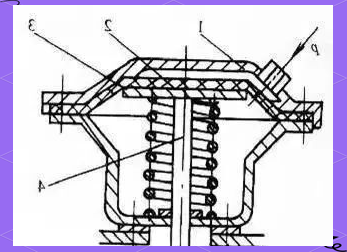
Detailed analysis of the film cylinder
Thin film cylinder, this type of cylinder with compact structure and small volume, its working principle and structural characteristics are worthy of in-depth discussion. The core component of the film cylinder is the diaphragm, usually made of fabric rubber, steel sheet or phosphor bronze sheet carefully, the thickness is controlled in the range of 5 ~ 6mm, there are also thinner variants such as 1 ~ 2mm thick diaphragm. Its working principle is similar to that of a spring-returned piston single-acting cylinder, which moves the piston rod through the push of compressed air. This type of cylinder is not only simple in structure, easy to process, cost-effective, but also highly respected for its excellent sealing and durability. It is worth mentioning that the film cylinder does not need to wear parts, and the maintenance is quite simple and fast. Although its travel is relatively short, usually no more than 50mm, especially the flat diaphragm, whose travel is only about one-tenth of the diameter, the film cylinder still plays an indispensable role in many applications.
1-cylinder block, 2-diaphragm, 3-diaphragm disc, 4-piston rod.
Structure and working principle of combined cylinder with valve
With valve cylinder, this combined pneumatic actuator combines the functions of cylinder, reversing valve and speed control valve. Its clever design saves the cumbersome connection pipe and pipe joint, not only reduces the energy loss, but also realizes the compact structure and convenient installation. In addition, the valve part with valve cylinder provides a variety of flexible control methods such as electric control, gas control, mechanical control and manual control to meet different application needs. Common valve installation positions include the tail of the cylinder, the upper part, etc., as shown in the figure below, the electromagnetic reversing valve is cleverly placed in the upper part of the cylinder. Once the electrical signal is received, the solenoid valve quickly switches, enabling direct pneumatic control of the cylinder action.
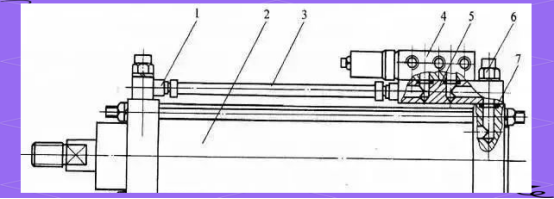
Structural characteristics and advantages of combined cylinder with valve
Combined cylinder with valve, this innovative pneumatic actuator not only integrates multiple functions such as cylinder, reversing valve and speed control valve, but also shows its unique charm in the structure. Its compact and easy to install design makes cumbersome connecting pipes and fittings a thing of the past, effectively reducing energy consumption. In addition, the valve section with the valve cylinder provides a variety of control methods, including electric control, air control, mechanical control and manual control, flexible to meet the needs of various application scenarios. Common valve mounting positions, such as the tail and upper part of the cylinder, allow control components such as electromagnetic directional valves to be easily integrated into the overall design. Once the corresponding signal is received, the solenoid valve quickly reacts to achieve precise pneumatic control of the cylinder action.
1- Fittings, 2- cylinders, 3- gas pipes, 4- solenoid directional valve, 5- directional valve base plate, 6- one-way throttle assembly, 7- sealing ring. These components together form the fine structure of the combined cylinder with the valve.
Structure and working principle of magnetic switch cylinder
The design of the magnetic switch cylinder is unique, its piston is equipped with a magnetic ring, and the cylinder is directly equipped with a magnetic switch. This design enables the magnetic switch to accurately detect the stroke position of the cylinder, thus realizing the intelligent control of the reciprocating movement of the cylinder. Compared to traditional travel valves or travel switches, this design is simpler and more efficient, and does not require additional stops on the piston rod.
The working principle is shown in the figure: the permanent magnetic ring on the cylinder piston moves with the movement of the piston, and when it approaches the reed switch on the cylinder housing, the magnetic force line passes through the tongue reed and magnetizes it. Due to the magnetic force, the two reeds attract and touch each other, thus making the switch open. When the permanent magnet returns and stays away from the tongue reed, the magnetic field strength weakens, the reed pops open under the action of elasticity, and the switch is disconnected. This on-off and off-cycle process precisely controls the reciprocating movement of the cylinder through the reversing action of the solenoid valve.
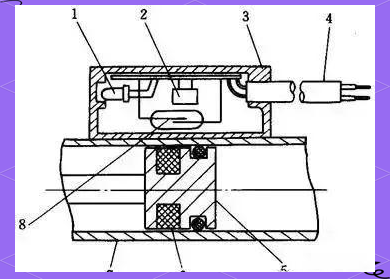
Action indicator, responsible for showing the working state of the cylinder.
Protection circuit to ensure that the cylinder can be safely disconnected under abnormal conditions.
The switch housing protects internal components and enhances the stability of the overall structure.
Wires are connected to the magnetic switch and control system to achieve signal transmission.
The piston, through its movement drives the movement of the magnetic ring, thus triggering the switch action.
Magnetic ring, the use of its magnetic effect and reed switch interaction to achieve switch on and off.
The cylinder provides stable support and guidance for the main part of the cylinder.
The reed switch changes its state through the movement of the magnetic ring, and then controls the movement of the cylinder.



